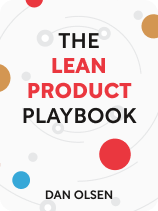

This article is an excerpt from the Shortform book guide to "The Lean Product Playbook" by Dan Olsen. Shortform has the world's best summaries and analyses of books you should be reading.
Like this article? Sign up for a free trial here.
Is your product truly meeting customer needs? How can you gather meaningful feedback to improve your offering?
Customer interviews are a powerful tool for understanding your target audience. By speaking directly with potential users, you can gain valuable insights into their preferences, pain points, and expectations. This process helps refine your product and ensure it resonates with your intended market.
Read on to learn how to conduct effective customer interviews to assess their needs and validate your product.
Interview Customers to Assess Their Needs
Dan Olsen recommends conducting customer discovery interviews when exploring customer needs: Hold one-on-one customer interviews with prospects and ask about various topics such as their interests, goals, and opinions about existing products in the market. You can also ask how valuable the benefits your product could offer would be to customers.
| Recruit Reference Customers In Inspired, Marty Cagan encourages you to build long-term connections with prospective customers instead of just interviewing them once by recruiting a team of reference customers: loyal customers who can be counted on to buy the final version of your product and recommend it to others. This team, ideally made up of six to eight people, can help you develop your product’s features and marketing plan. You should consider these customers as partners because they will contribute their input throughout your product development process. This constant conversation can reveal what potential customers really want. More importantly, it enables them to voice any issues or suggest ideas early on, which allows you to make changes and improvements as you’re still creating the product, rather than after everything’s been designed and built. |
Interview Customers to Validate Your Product
Olsen writes that conducting in-person interviews with target customers is one of the most effective ways to validate your product idea and UX design. Getting feedback from real prospective customers allows you to understand whether customers find your product valuable and why.
(Shortform note: In The Mom Test, Rob Fitzpatrick agrees on the importance of getting quality feedback from customers but cautions that most feedback does more harm than good by convincing you that bad ideas are good. He contends that the only way to objectively verify the worth of your product is by getting customers to commit to your product. This means trying to convince them to sacrifice something for it, such as their money, time, or reputation. For example, you may try to get them to post about your product on social media.)
To validate your product idea, you’ll need to show customers some version of your product. Olsen recommends that you present a range of product design prototypes that allow you to test your hypotheses without having a completed product. The closer the prototype behaves and appears to the final product, the better and more accurate feedback you’ll get.
Olsen describes several design prototypes you can consider:
- Wireframes: A simple, sketch-like diagram showing the basic layout and functionality of your product.
- Mockups: A more detailed visual representation of what your final product will look like, including color, font, and images.
- Manual MVPs: Interactive versions of your product that require human involvement to simulate the experience of using the final product. One example is what’s known as a Wizard of Oz MVP, which has a human operator perform the tasks that would typically be automated in the final product, giving the illusion of a functioning system. This allows you to gather valuable insights before investing in further development.
| The Four Types of Design Prototypes Design prototypes can serve other purposes beyond getting feedback from customers. In Inspired, Marty Cagan describes four types of prototypes and explains why and when you should use them: 1. Feasibility Prototypes: This type of prototype is used mainly for engineers who aren’t sure whether they can build a tech product. Engineers create a feasibility prototype by writing just enough code to know they can complete the project. Since this prototype is made solely for engineers, you won’t be showing it during customer interviews. 2. User Prototypes: These prototypes are merely simulations of the final product and include the wireframes and mockups that Olsen discusses. Cagan suggests you use simple user prototypes mainly for your team to visualize the product. However, more complex versions can be used both internally and shown for customer tests. 3. Live-Data Prototypes: A functional prototype that can get real data on whether a product will sell. These are not scalable, can’t handle much traffic, and don’t have any SEO or analytics, but they allow customers to use and test the product. Cagan says that these prototypes are good for testing high-risk ideas. 4. Hybrid Prototypes: This prototype is a combination of the other three and includes the manual MVPs that Olsen discusses. According to Cagan, these prototypes are the least scalable of the four types and serve mainly as a means to get customer feedback while reducing unnecessary engineering work. |
Olsen suggests you also get feedback on your product’s user experience (UX) design. UX is how a user interacts with your product or service and makes use of its features. Olsen writes that a product with good UX is both intuitive and enjoyable to use. When you interview customers, get feedback on UX design by evaluating how easy it is for customers to complete certain tasks. The more effort required, the more difficult your product is to use and the less valuable it becomes to users.
(Shortform note: In User-Friendly, Cliff Kuang and Robert Fabricant define four components of good user experience design: It makes the user’s life easier, is based on an effective mental model (a metaphor or framework that helps people conceptualize how a product should work), provides feedback to the user, and mirrors qualities appreciated in humans—such as transparency and learning our needs over time.)
Now that you know what elements of your product to test, how do you get quality feedback from customers? To conduct effective interviews, Olsen suggests you:
1. Recruit target customers. Advertise on odd job platforms like TaskRabbit, approach people in-person, or work with customer research companies. Aim to get five to eight customers per round of testing. To ensure you get customers in your target market, use screening questions that qualify or disqualify respondents. For example, if your product is for athletes, you might ask survey participants about their weekly exercise hours and exclude those who exercise less than 10 hours a week.
(Shortform note: When recruiting target customers to test your product, try to capture the diversity and complexity of your target audience to get the most helpful feedback. Consider various demographic factors such as age, gender, ethnicity, culture, language, disability, education, income, location, and lifestyle. Make sure your tests are inclusive and accessible, covering different formats and including accommodations like subtitles or interpreters.)
2. Conduct in-person interviews with one participant at a time. In-person interviews help you develop rapport with the participant and pick up on nonverbal cues. Additionally, people express themselves more truthfully when you interview them alone, leading to more accurate results. Olsen explains that people often hesitate to openly share their thoughts in front of others, and they may also change their beliefs after hearing other people’s opinions.
(Shortform note: Group interviews may generate less accurate feedback because of our tendency to conform—to change our beliefs to fit in with others. In The Psychology Book, the authors share how psychologist Solomon Asch shed light on this tendency: He placed participants in groups and asked them to identify which of three lines on a card matched the length of a line on another card. Unbeknownst to the participants, the other members had been instructed to give incorrect answers. Asch found that 75% of participants agreed with the group’s incorrect answers at least once. Thus, even if people intend to give truthful answers, their opinions can be skewed upon hearing those of others.)
3. Ask open-ended questions. Some participants may be less expressive than others. As participants interact with your product prototype, encourage them to share their thoughts by asking open-ended questions—those that start with “why,” “what,” or how.”
(Shortform note: In You’re Not Listening, Kate Murphy agrees on the benefits of open-ended questions and adds that you can also encourage sharing by giving off inviting nonverbal cues: Maintain strong eye contact and a relaxed posture, and pause to allow people to express their thoughts completely.)
4. Avoid intervening. Olsen suggests you avoid the temptation to step in when the participant has difficulty using your product. If customers ask for your input, shift the focus back to them with another question. For example, if a participant says they can’t find a search function, you could ask: “Where would you expect to find the search function on this page?” This method helps you to collect unbiased feedback.
| When to Intervene During a Product Test According to other experts, there are times when you should intervene during a customer test: • When the participant is having so much trouble that they can’t progress any further • When the participant is taking so long on one task that they won’t get to other parts of the test • When the participant’s actions can potentially cause problems—such as accidentally deleting data or charging a credit card • When the participant thinks they’ve finished a task but there are more steps to be taken However, like Olsen, they suggest you avoid intervening as much as possible, and when you do, record how many times and for what reason you intervened. This can help you recognize problems with your product as well as your test itself. |

———End of Preview———
Like what you just read? Read the rest of the world's best book summary and analysis of Dan Olsen's "The Lean Product Playbook" at Shortform.
Here's what you'll find in our full The Lean Product Playbook summary:
- An entrepreneur’s guide to making the best product on the market
- How to create a new product without gambling on the results
- How and where to find your target market and audience






